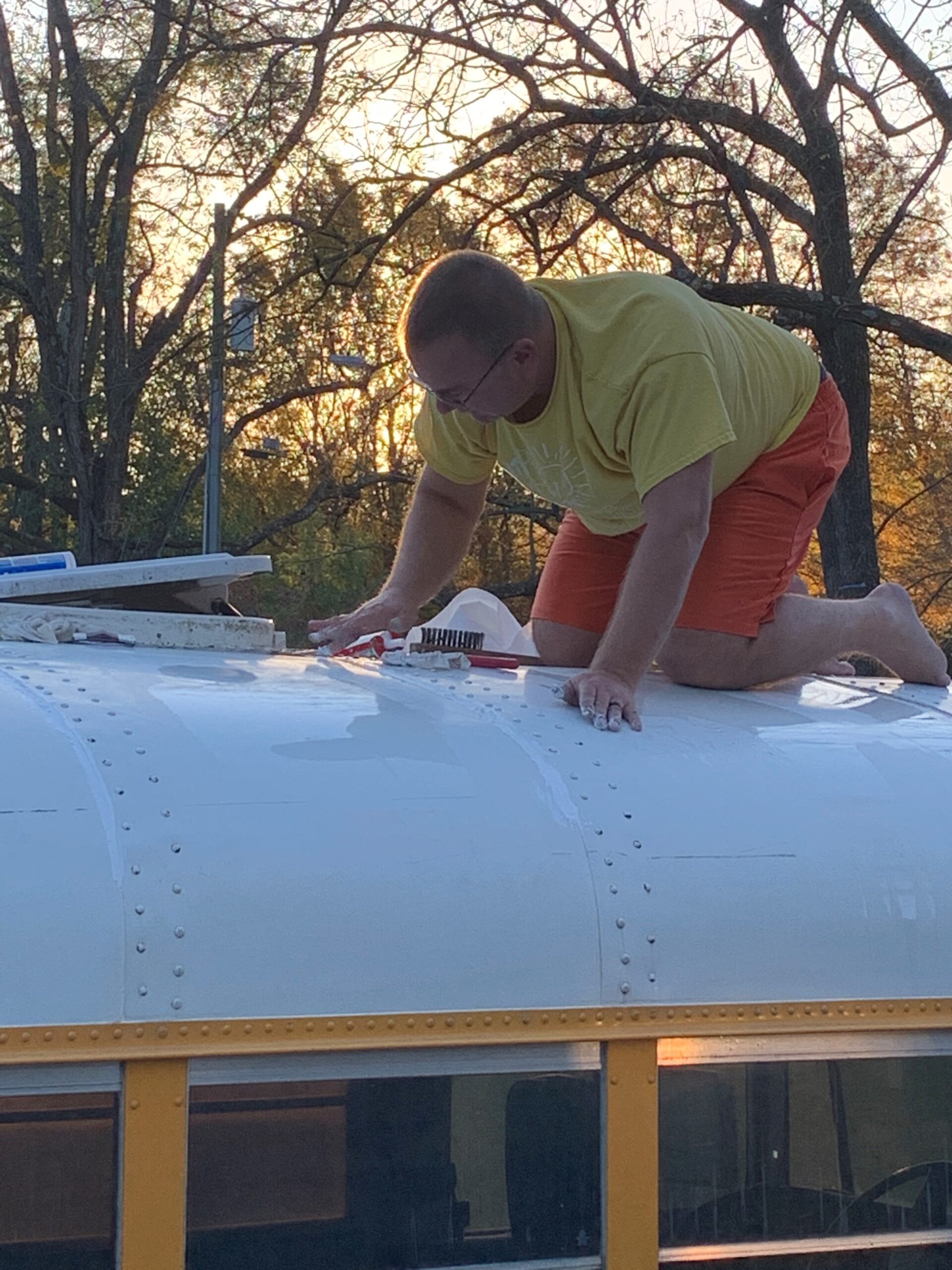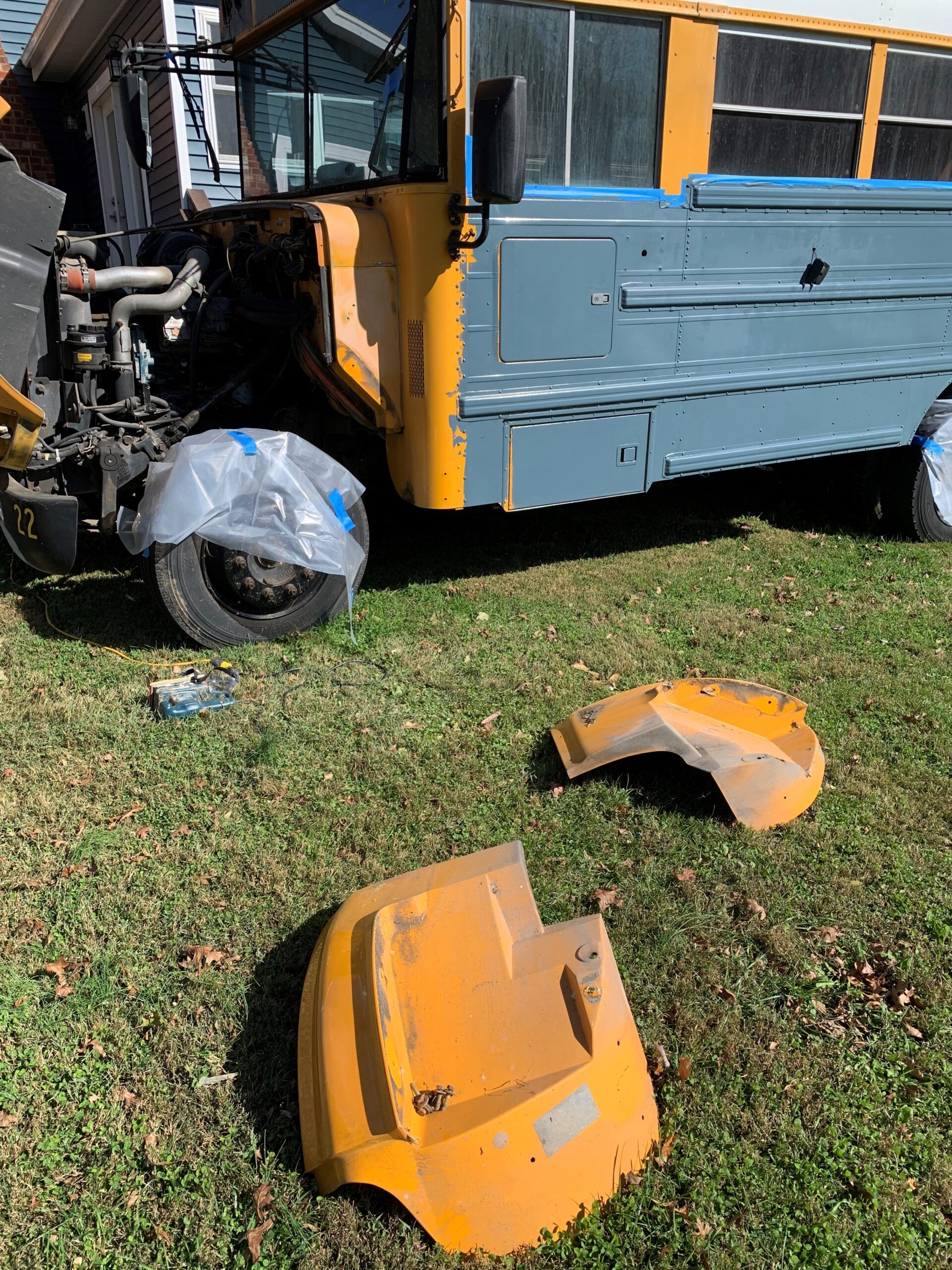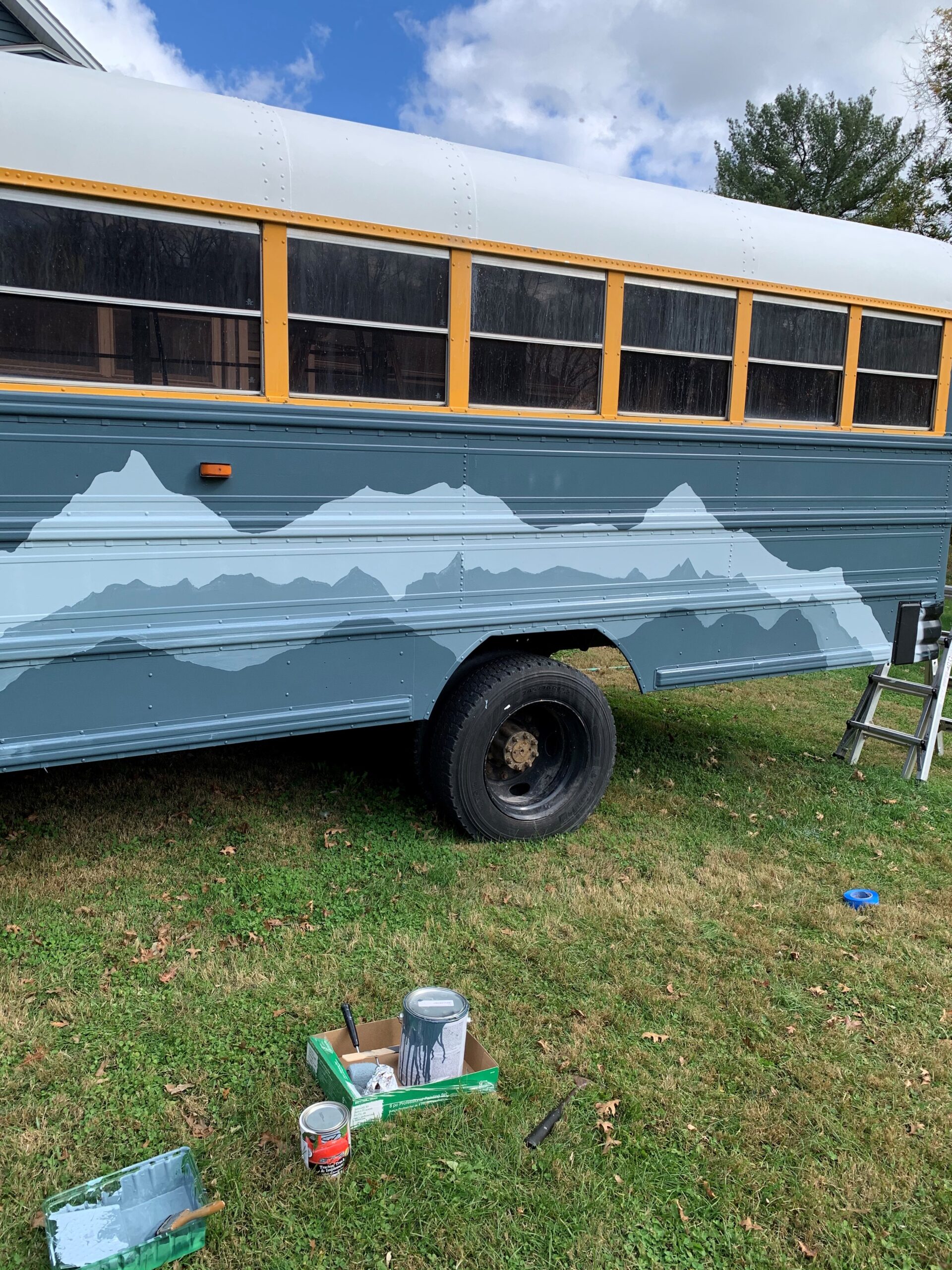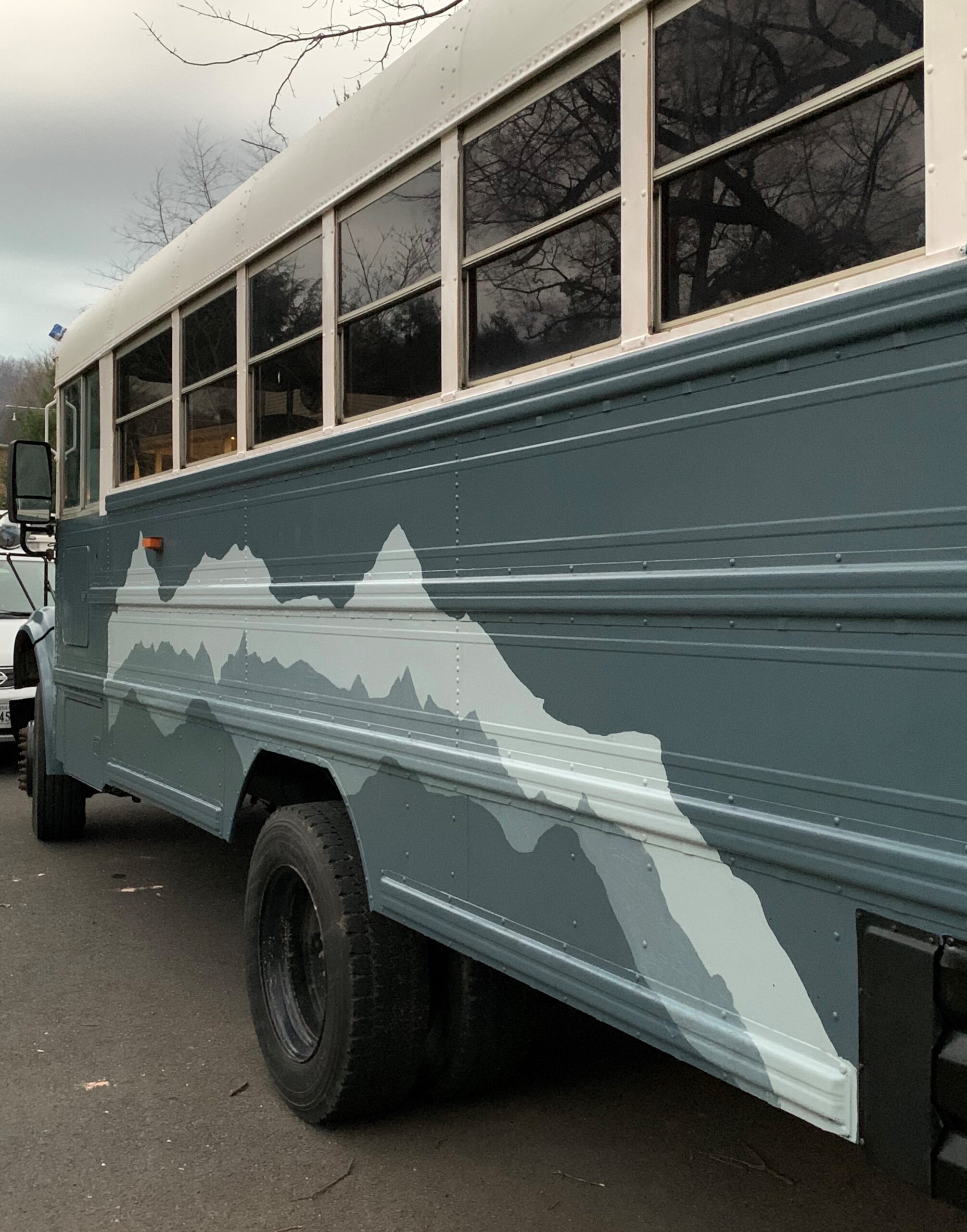
The year before I turned 40, I trained and ran a half-marathon. You may be thinking because of my long limbs (see power washing incident in first blog) that I would be a fast runner; but no, that attribute belongs to my siblings who finish races, go get snacks, accept their “top finisher in age group” awards, and then walk back through the course to find me as I slog toward the finish line. The reason I tell you about this event is that there are a lot of parallels between training for a long race and converting a bus. I learned a lot about myself and my body during those daily runs that got longer and longer.
Here are a few things I am learning about our family as we “run the race” toward having a bus ready for a trip this summer:
The solitude of demolition.
At the beginning of this pandemic, when Drew or I wanted to get some peace and quiet with everyone at home, we just threatened a little PDA, and the boys sprinted from the room. Unfortunately, it only took about a month for them to realize that my level of comfort with public displays of affection aligns with the Brady Bunch and not Fast Times of Ridgemont High. Now I get all of the alone time I want when I work on the bus. The boys have learned that if they wander within shouting distance, they will be put to work. My introverted self is enjoying the blissful solitude of prepping the exterior for painting. If you throw in a little sunshine, I am a happy woman.
Boys prefer power tools.
I have learned that tasks that involve power tools also involve a lot less complaining.
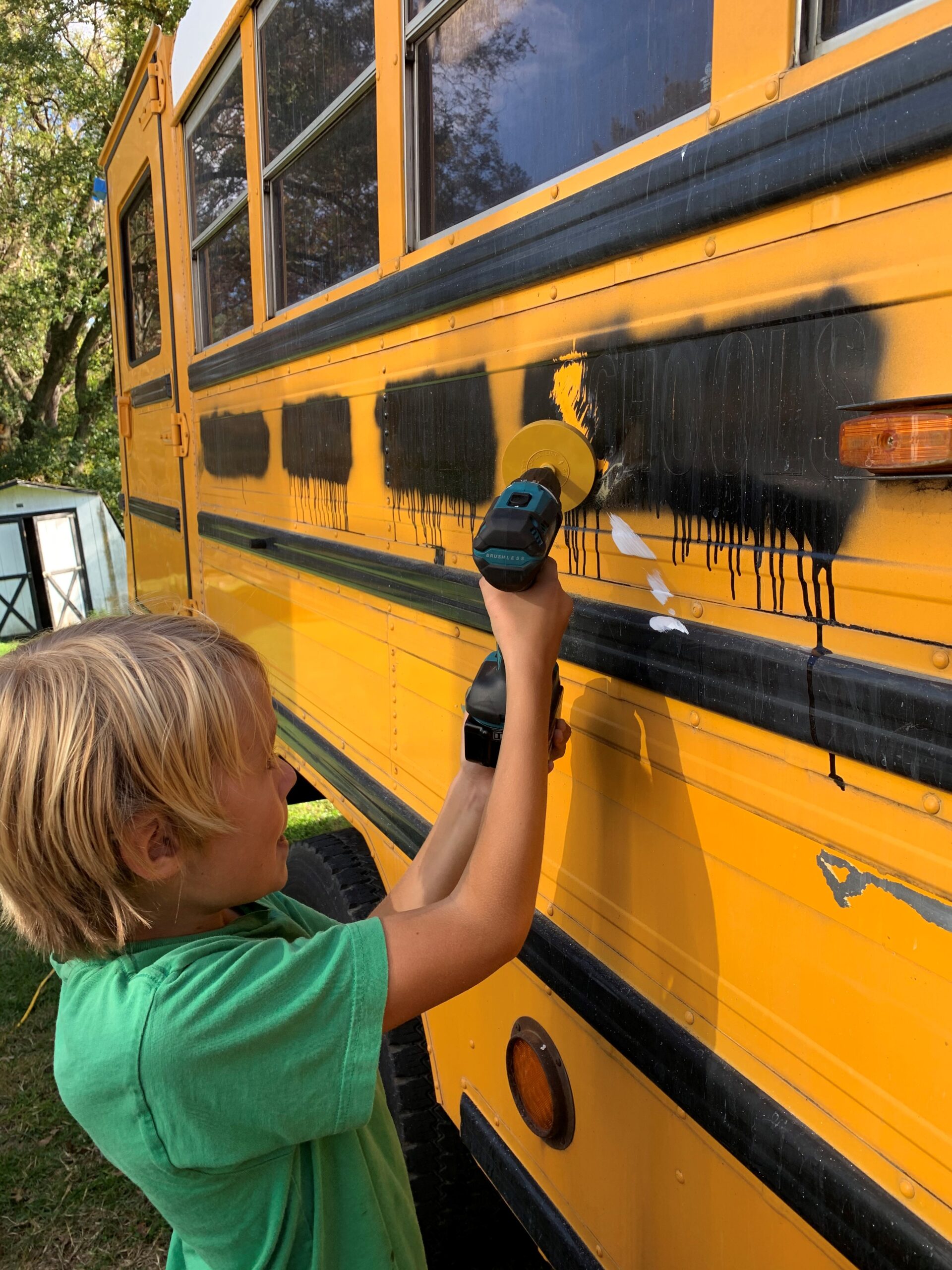
The Tom Sawyer effect.
When I text my oldest son and ask him to be home at 4:30 to put in an hour of work, he shows up with 2-3 friends who still find the novelty of the bus work to be fun. He will make a great boss one day.
The Twilight Zone Rule
When there is impending weather or the sun is setting, this is not a good time to try to get a final project done. Drew and I are both handy and hardworking, but we approach projects very differently. When we have time and energy – say on a full Saturday – we are an excellent team. But you throw in a time crunch or extreme weather conditions, and things get rough. I am learning to avoid the “20-minute bus project when you get home from work.”
Stickers have been cancelled until further notice.
While glitter has been a banned substance at the Miller home for a long time, stickers have been on the fence. During the preschool “name tag years,” when they ruined shirts by going through the wash, they almost got cut from the team. But stickers rallied in recent years by distinguishing water bottles during soccer practice or labeling cups for individual identification and consumption. But now they are being excommunicated from the Miller family. After spending hours peeling small black letters and reflective tape, I am no longer feeling friendly toward stickers.

What has actually happened….
Demo Day 2
We spent an entire Saturday working to remove flooring and metal from inside the bus. It quickly became apparent that a bus built in 1998 would not be easy to strip down. For every screw that was removed, there were three that wouldn’t budge. Enter the angle grinder. In the continued theme of avoiding things that can create bodily harm, I left Drew to work this new tool. He went through three grinding pads in one afternoon, and we realized that we would need to reevaluate our plan of attack.
Shifting focus to the outside….
Two things happened after that first Saturday of demo. One, Drew ordered some more items that are supposed to help with stripped screws. Two, we realized that we needed to shift our focus to the exterior of the bus while the weather was still warm enough for painting. Thus, began my personal campaign against stickers. Our bus contained 88 letter decals, 50+ ft of reflective tape, and two large rectangular 8” x 24” stickers. It took our family 2 weeks working multiple hours a day to remove all of these items.
Then I started on the scraping, sanding, and washing to prepare the bus for paint. The front of the bus is fiberglass and was covered in a clear coat. Each member of the Miller family got to spend some quality time with sandpaper and a scraper to get this part of the bus ready.
One of our best resources for information about bus conversion has been the book, Skoolies!: How to Convert a School Bus or Van into a Tiny Home or Recreational Vehicle by Will Sutherland.
If you are considering a project like this and you have an indoor option for painting, I highly recommend it, even though the fumes from the oil-based paint are strong. Here is why: the optimal time of day for outdoor painting is very limited. You have to wait for the dew to dry off the bus; then once the bus is dry, you have to work quickly with the paint. On a sunny day, the metal on the bus gets hot and dries the paint faster than you can apply an even coat. I learned to work in small sections, cutting in with a small brush and then rolling with a foam roller to remove the brush strokes. There are lots of rivets and seams on a bus, so it is difficult to just roll it. You end up using a small brush to get in cracks, etc. We tried waiting until the evening to paint so that the metal was not as warm, but then you deal with small bugs that swarm and land on the paint. The ideal option is to have a painting party and have many people painting in a short amount of time. But if you don’t have that option, then plan on taking a while to complete the exterior paint work.. It has taken me weeks to get the whole bus painted.
The one highlight from my painting experience is that I tried to freehand a mountain landscape on the side of the bus, and it turned out well. I remind myself that the bus will either be parked in our yard or traveling quickly, so any small mistakes won’t be noticed. We finished the painting project by spraying a clear coat. Over time the paint will get dinged up, and you will see yellow through the blue and white, but the clear coat should help keep it in good condition for a while.
